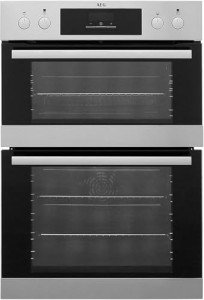20 Reasons To Believe Built In Appliances Will Never Be Forgotten
Unveiling the World of Built-in Appliances: Enhancing Modern Living
Built-in appliances have changed the method individuals approach home style and efficiency. These essential elements of contemporary homes not only optimize area but also develop a smooth aesthetic, making cooking areas and other locations look polished and arranged. From ovens that fit snugly within kitchen cabinetry to fridges that mix into the design, built-in appliances provide both functionality and style. This short article explores the various types of built-in appliances, their advantages, style considerations, and answers some often asked questions.
Comprehending Built-In Appliances
Built-in appliances are devices developed to be integrated into kitchen or home structures effortlessly. Unlike freestanding appliances, which can be moved and rearranged, built-in designs are typically installed into kitchen cabinetry or specific built-in areas throughout new home construction or considerable restorations. This allows for a cohesive style, enhancing performance while enhancing visual appeal.
Types of Built-In Appliances
The most typical classifications of built-in appliances include:
Type
Description
Examples
Cooking Appliances
Consist of ovens, microwaves, and stovetops that can be built into the kitchen cabinetry.
Built-in ovens, microwave drawers, induction cooktops
Refrigeration
Appliances that blend into the kitchen while keeping their cooling functions.
Built-in fridges, wine coolers
Dishwashing
Dishwashing machines created to be set up behind cabinets doors for a structured appearance.
Integrated dishwashers
Laundry
Appliances like washers and clothes dryers developed to fit neatly into utility room.
Built-in cleaning machines, mix washer-dryer systems
Other
A category that might consist of ventilation hoods, coffee makers, and custom appliances.
Built-in coffee devices, warming drawers
Advantages of Built-In Appliances
1. Area Efficiency
Built-in appliances are created to use space better. They can be customized to fit comfortably within existing cabinetry or distinct architectural functions of a home.
2. Visual Appeal
The integration of appliances allows house owners to create a tidy and cohesive appearance. The absence of large devices promotes a tidy environment, making areas, specifically kitchens, look more roomy and arranged.
3. Enhanced Functionality
Many built-in appliances come with sophisticated functions, permitting users to optimize their culinary efforts. The seamless style likewise encourages efficient workflow in the kitchen, an essential aspect for cooking lovers.
4. Increased Property Value
Top quality built-in appliances typically include considerable value to homes, as they reflect modern-day design and practical effectiveness. Prospective purchasers are normally brought in to homes equipped with these updated features.
5. Modification Options
Homeowners can pick from a range of surfaces, styles, and technologies, enabling them to tailor their area. Whether choosing for stainless steel, panel-ready options, or unique colors, there is an almost limitless range of options.
Design Considerations for Built-In Appliances
While the combination of built-in appliances can significantly improve the look and function of an area, certain design factors to consider should be considered:
- Measurements: Accurate measurements are vital for guaranteeing an appropriate fit within cabinetry.
- Ventilation: Proper ventilation is important for cooking appliances to prevent overheating and to keep air quality.
- Power Supply: It's essential to make sure that the needed electrical and pipes infrastructure is in location before setting up built-in appliances.
- Accessibility: Design ought to prioritize user accessibility to guarantee that utensils, appliances, and work locations are within simple reach.
- Aesthetic Compatibility: All built-in appliances ought to be picked to complement the style style of the home.
Frequently Asked Questions About Built-in Appliances
1. Are built-in appliances more costly than freestanding ones?
Built-in appliances tend to be more pricey due to their customized nature and installation procedures. However, the added worth and advantages can validate the financial investment, specifically in premium styles and innovations.
2. Can built-in appliances be moved easily?
No, built-in appliances are generally not designed to be moved. linked webpage are installed into cabinetry, making relocation difficult and typically requiring considerable effort and improvement.
3. How do I maintain built-in appliances?
Upkeep depends on the kind of appliance. Regular cleaning is suggested in addition to regular checks for any service issues. Constantly refer to the manufacturer's standards for specific upkeep requirements.
4. Are built-in appliances energy-efficient?
Lots of built-in appliances are designed to be more energy-efficient than older or freestanding designs, typically geared up with functions that lessen energy consumption.
5. Can I install built-in appliances myself?
While some house owners might choose to set up appliances themselves, it's frequently a good idea to work with a professional, particularly for electrical or plumbing connections. Correct setup guarantees safety and ideal efficiency.
Built-in appliances represent an ingenious approach to accomplishing a modern-day, effective, and visually pleasing home. With various options readily available, homeowners can improve both the functionality and style of their home. As the demand for sophisticated and practical styles continues to rise, the combination of built-in appliances will stay a considerable pattern in contemporary home design. By considering the benefits, style needs, and upkeep requirements, people can make educated choices about incorporating these streamlined and advanced machines into their homes.
